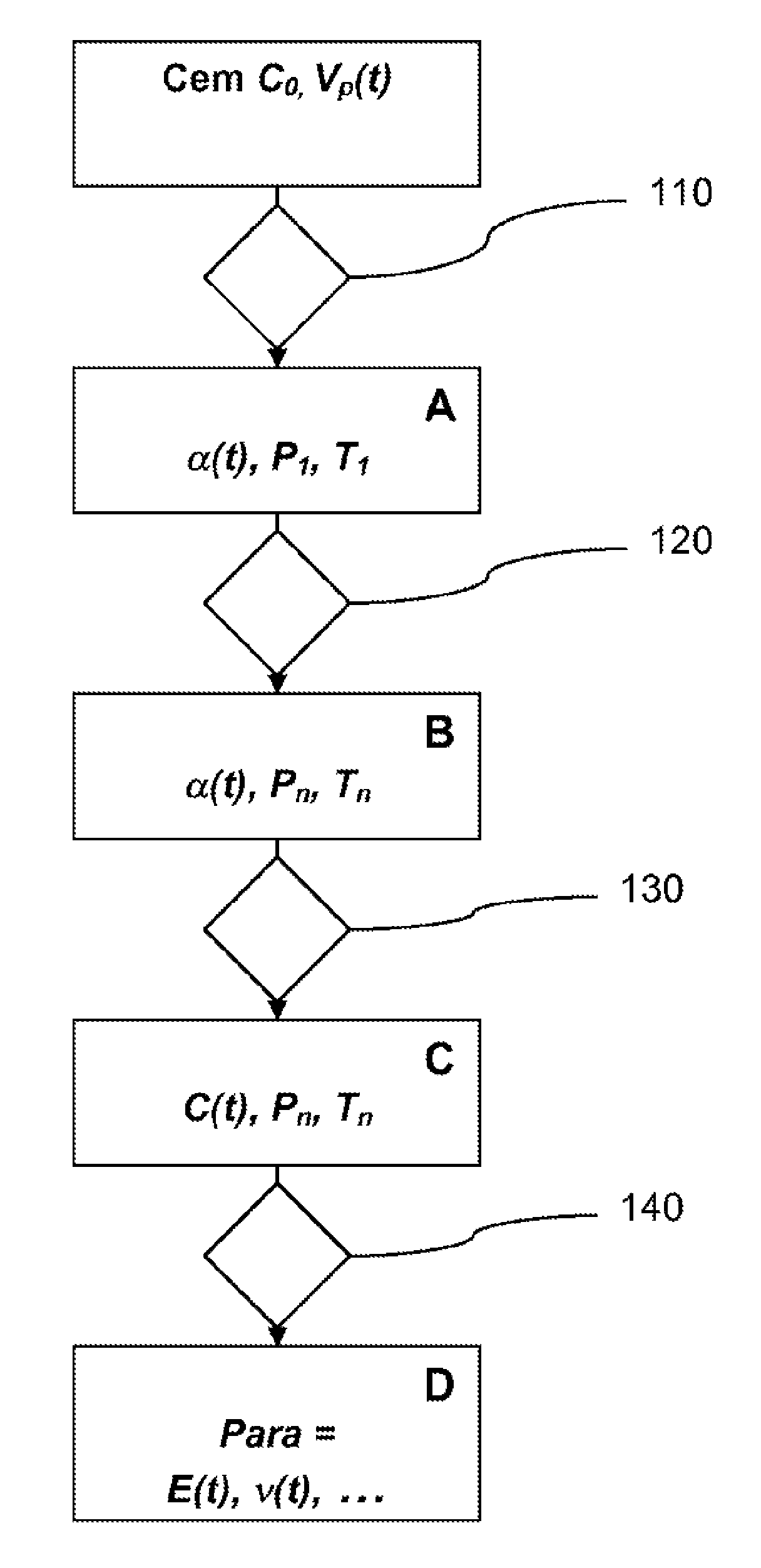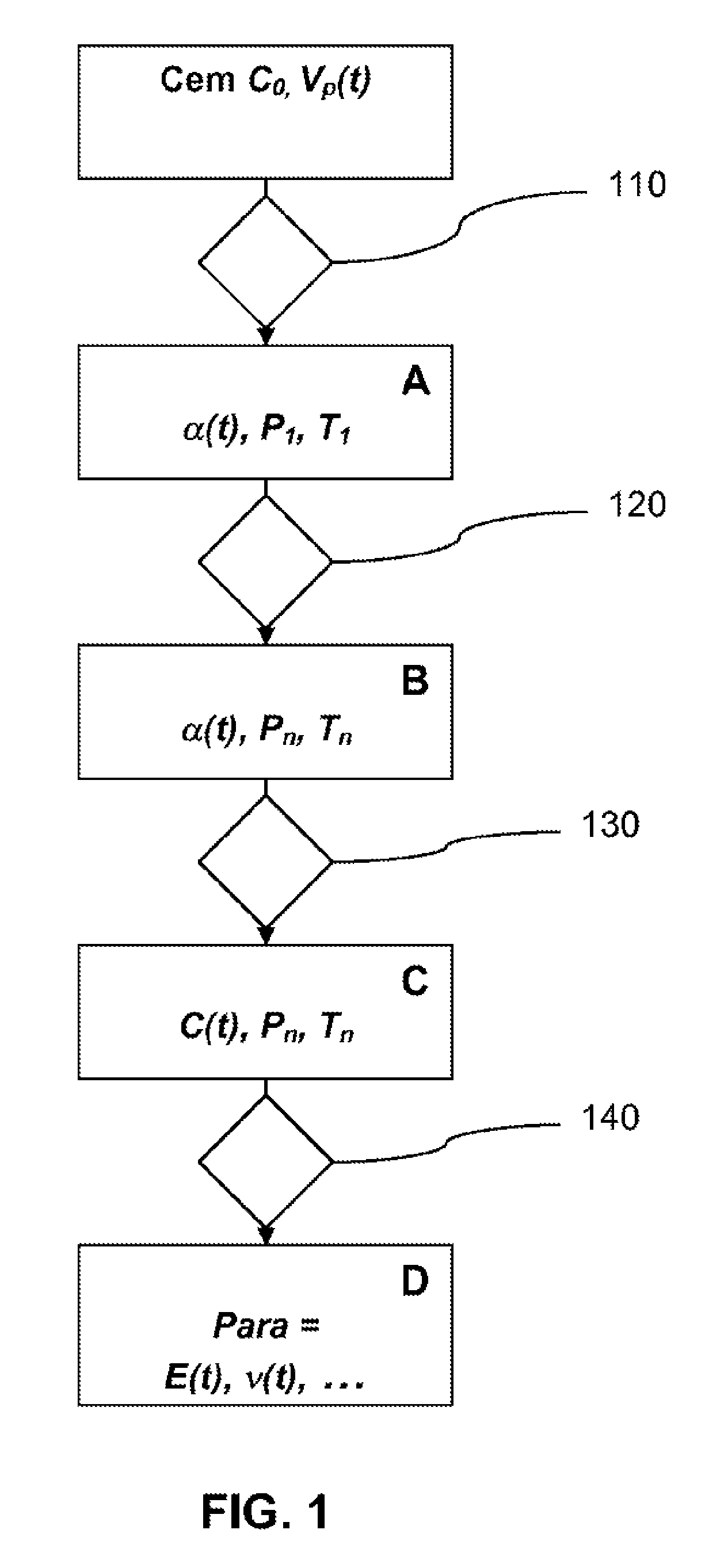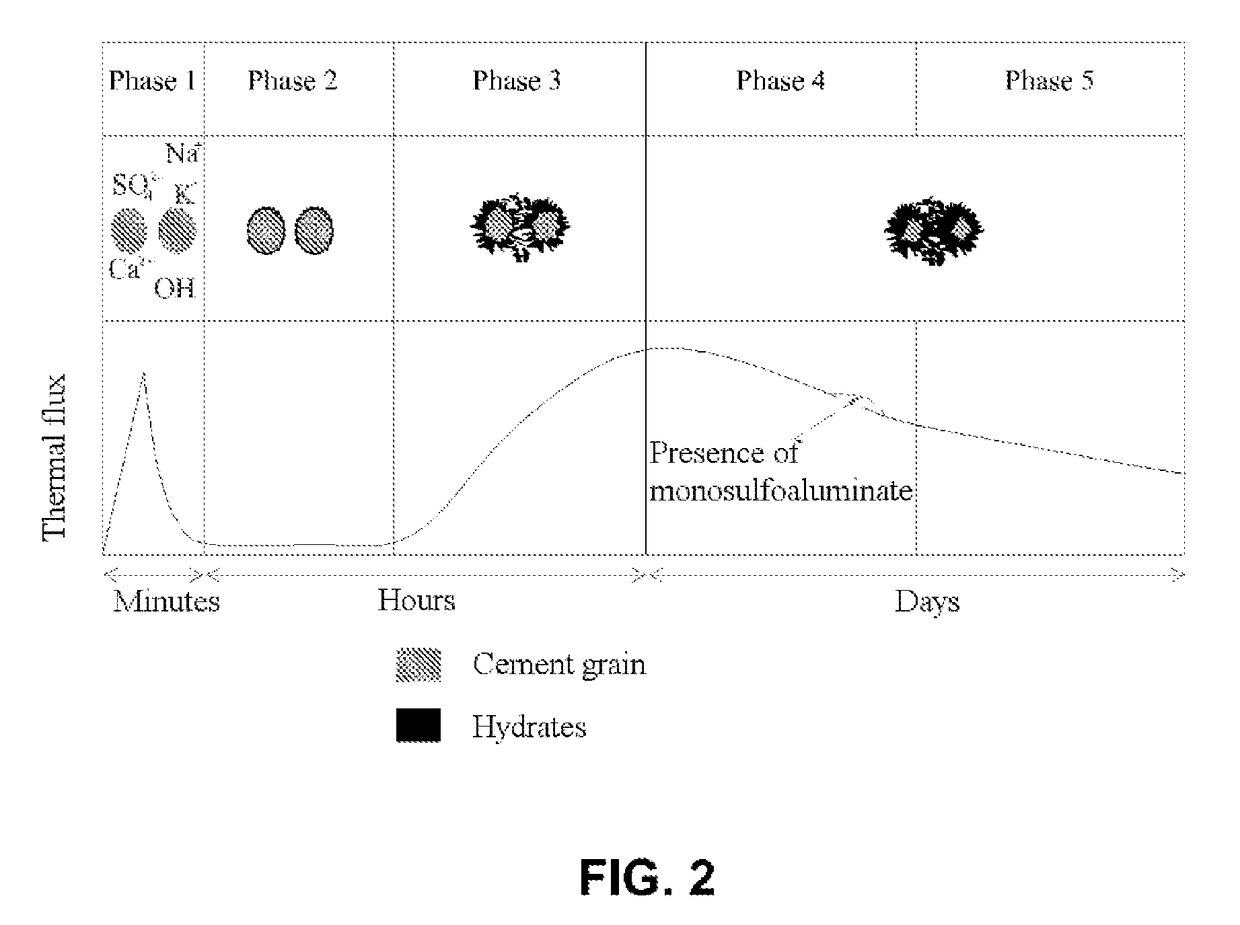Method for characterising the mechanical behaviour of cements
a technology of mechanical behavior and cement, applied in the direction of material solid analysis using sonic/ultrasonic/infrasonic waves, measurement devices, etc., can solve the problems of affecting the stability and imperviousness of the well, degrading the mechanical and hydraulic properties of cement plugs, and modifying the contribution of cement plugs to the stability and thermal stress of the well. , to
- Summary
- Abstract
- Description
- Claims
- Application Information
AI Technical Summary
Benefits of technology
Problems solved by technology
Method used
Image
Examples
examples
[0243]The invention will be demonstrated with its obvious advantages with the following, nonlimiting example.
[0245]The cement system cem1 given below as an example comprises a Portland cement of class G, with the composition shown in Table 3.
[0246]
TABLE 3Chemical nameChemical formulaSymbolPercentage by weight (%)Tricalcium silicate (alite)3CaO•SiO2C3S55Dicalcium silicate (belite)2CaO•SiO2C2S18Tricalcium aluminate3CaO•Al2O3C3A10Tetracalcium aluminoferrite (ferrite)4CaO•Al2O3Fe2O3C4AF8Calcium sulfate dihydrate (gypsum)CaSO4•2H2OCSH26
[0247]The initial composition C0 of the cement system cem1 is given in Table 4 below. It corresponds to a ratio of water to cement equal to about 044 (w / c).
[0248]
TABLE 4ComponentAmount [g]Cement914.12Water396.13Antifoaming agent7.31(D047)Dispersant11.06(D604AM)Anti-sedimentation agent1.37(D153)
[0249]The cement slurry is prepared as follows, by mixing in 5 steps:[0250]mixing distilled water with an antisedimentation agent (D153);...
PUM
| Property | Measurement | Unit |
|---|---|---|
| temperature | aaaaa | aaaaa |
| pressure/temperature | aaaaa | aaaaa |
| pressures | aaaaa | aaaaa |
Abstract
Description
Claims
Application Information
 Login to View More
Login to View More - R&D
- Intellectual Property
- Life Sciences
- Materials
- Tech Scout
- Unparalleled Data Quality
- Higher Quality Content
- 60% Fewer Hallucinations
Browse by: Latest US Patents, China's latest patents, Technical Efficacy Thesaurus, Application Domain, Technology Topic, Popular Technical Reports.
© 2025 PatSnap. All rights reserved.Legal|Privacy policy|Modern Slavery Act Transparency Statement|Sitemap|About US| Contact US: help@patsnap.com



